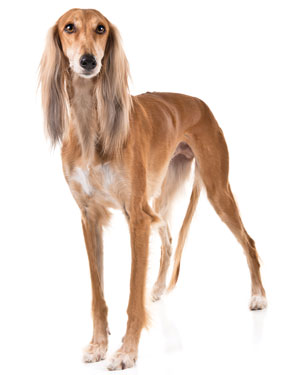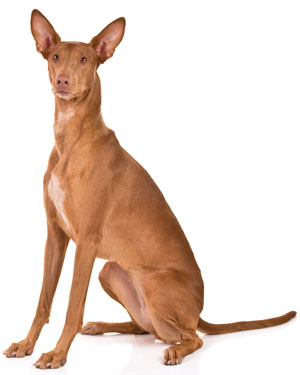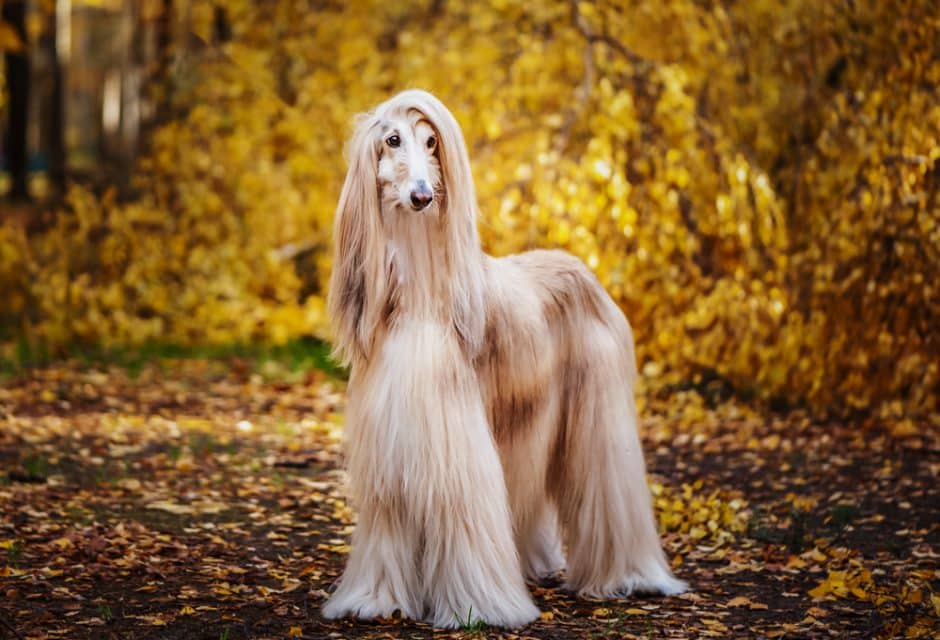
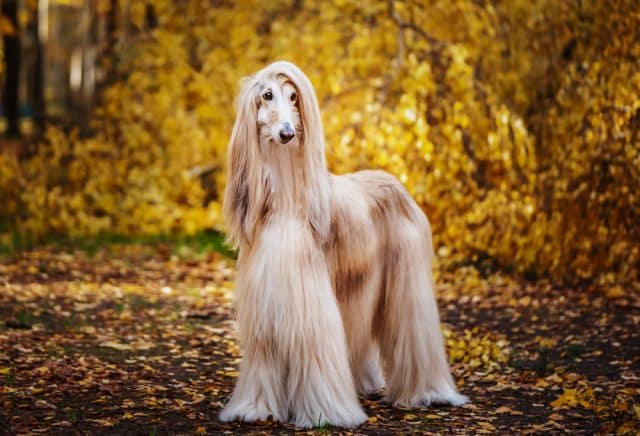
The Afghan Hound
Breathtakingly beautiful and one of the most eye-catching breeds on the planet
Afghan Hounds. They’re breathtakingly beautiful and one of the most eye-catching breeds on the planet. But there’s more than meets the eye when it comes to the supermodel of the dog world. Let’s learn a little more about this exotic breed and whether they’re right for you.
Early History
An ancient breed, the Afghan Hound’s early development predates historical records. While we cannot say with certainty exactly how old the breed is, archaeological and genetic evidence indicates the breed has existed for many thousands of years. The Afghan Hound has been identified as one of the basal breeds—a short list of dogs believed to have evolved from wolves and considered the foundation stock from which all modern dogs have developed.
As the name suggests, the breed developed in Afghanistan, where they were used to course game through rough, mountainous terrain. Known by Afghanis as Tazi, they were revered by hunters as a dog with an unparalleled ability to gallop at great speed while enduring the region’s harsh and unforgiving climate. They were used to hunt rabbits, small game, and even gazelle.
Clearly, the Afghan Hound was built for speed, but they have other advantages. While most dogs see 180 degrees, the Afghan has a 270-degree viewpoint that enables them to chase prey without losing sight of it.
That long, silky coat is both beautiful and functional, helping the breed withstand the extreme weather conditions in the mountains of Afghanistan and surrounding countries. In short, the Afghan may look like a supermodel, but they’re better described as a performance athlete.
Gaining Notoriety
Early exports of the breed often occurred by way of soldiers who took dogs home with them at the end of their military service. British soldiers brought Afghan Hounds (who they referred to as Persian Greyhounds) home with them in the early 1900s.
The Afghan Hound’s appearance didn’t change significantly in the years that followed, although it’s fair to say the breed was refined through the early 1900s in Britain, North America, and Australia. Afghans from different lines—some with heavier coats than others; some finer-boned than others, and so forth—were ultimately bred together to come up with an ideal standard.
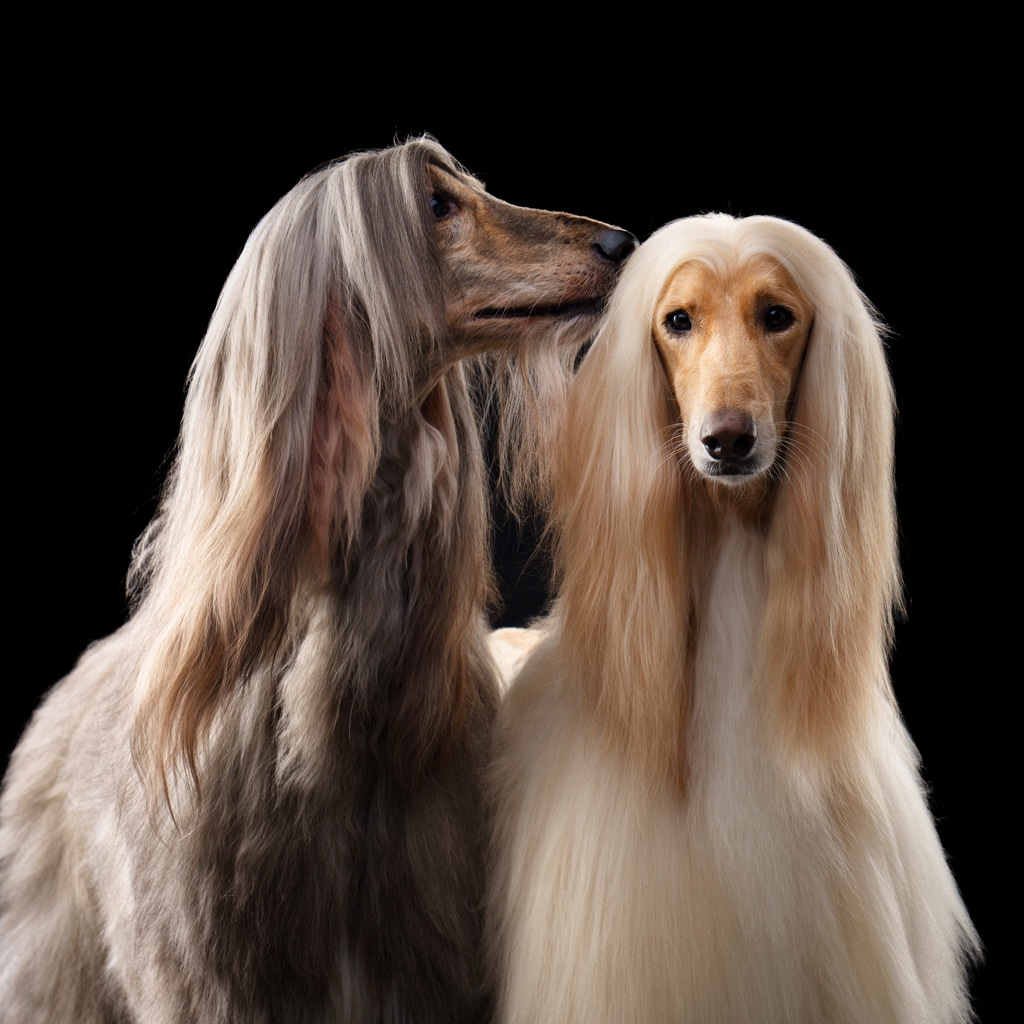
anna-av/bigstock
A Standard Evolves
The Afghan Hound was recognized by The Kennel Club (TKC) and the American Kennel Club (AKC) in 1926.
The Afghan Hound’s body is tall, long, and deep-chested. The AKC standard notes that males stand 26”-28” at the withers, with females ranging from 24”-26”. The Afghan’s hips are prominent, and the curly tail is quite unique.
The face is long and angular, with almond-shaped eyes set wide apart and complemented by long, silky ears. The coat is long, silky, and accepted in any colour. How these dogs carry themselves is of importance. The AKC Standard notes, “The Afghan Hound is an aristocrat; his whole appearance is one of dignity and aloofness with no trace of plainness or coarseness.”
Unique Movement
All dogs are beautiful, but some are real “movers” whose appeal deepens once they’re in motion.
The Afghan’s double-suspension gallop boasts a fluid, four-beat gait that coincides with two moments of suspension where all four of his feet are off the ground. At slower speeds, especially when viewed from the side, to watch an Afghan move is to witness poetry in motion. Their strength, balance, and athleticism come together seamlessly and give the impression that this dog isn’t trotting along, but rather floating in perfect, effortless style.
Iconic and Highly Sought-After
An Afghan Hound named Shirkhan of Grandeur won the Westminster Kennel Club’s coveted Best in Show prize in 1957 and appeared on the cover of Time magazine the same year. The photograph captured his regal essence and generated considerable interest in the breed worldwide. The breed has also graced the cover of Life Magazine. Aristocratic, elegant, and rare, the Afghan Hound became a significant status symbol in the 1960s and 1970s.
Perhaps most famously, Pablo Picasso owned an Afghan and acknowledged him as not only a cherished pet—but also a muse of sorts. His hound, Kabul, is featured prominently in his work Femme au Chien, where the dog is presented in Picasso’s stylized, abstract style. Picasso’s stunning, 50-foot-tall sculpture installed in the Daley Plaza in 1967 was often suspected to have been inspired by his pet, a fact that Picasso confirmed during an interview with Stanley Coren, reveals a 2011 article Coren authored for Modern Dog magazine. The famous sculpture is, indeed, a representation of Kabul’s regal head.
Fun Facts
+ As puppies, they have a fuzzy coat with “monkey whiskers” on their faces. Around the one-year mark, that coat sheds and their long, silky coat comes in over time.
+ Afghans can be clownlike and a bit naughty. They’re notorious for ‘stealing’ items right from under their owners’ noses!
+ In short bursts, the Afghan can reach speeds of 40 to 45 miles per hour, putting them on par with race horses.
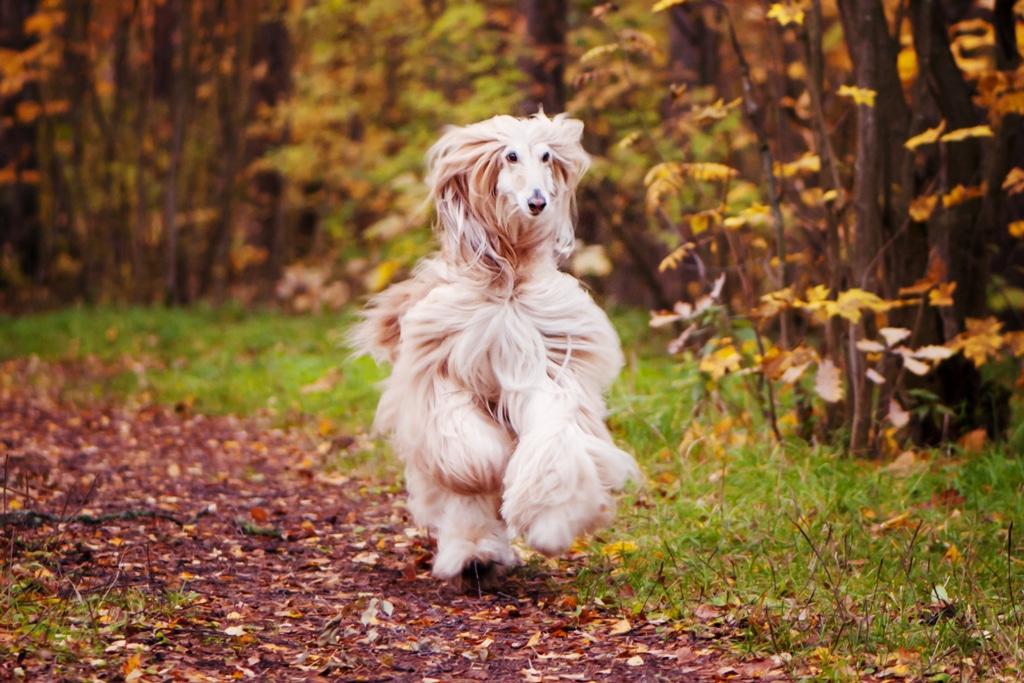
Wildstrawberry/Bigstock
Get to Know the Afghan Hound
+ Tall, deep-chested, and built for speed
+ Relatively quiet in the home
+ Bonds closely with his family, but aloof with strangers
+ Loves to run and can do so for hours on end
+ Clown-like and playful
+ A sensitive soul
+ Intelligent, but not biddable
+ Significant exercise requirements
Living with the Afghan Hound
So, what’s the Afghan Hound like to live with?
In many ways, this is a classic Sighthound—relatively quiet around the home and independent. These aren’t Velcro dogs that will follow you around everywhere you go. And, while they bond closely with their family, they’re generally aloof and disinterested with strangers. The Afghan doesn’t lavish affection on just anyone, but when you’re on the receiving end of their adoration, the affection feels very special and purposeful. To be chosen by a Sighthound, some of us feel, is a great honour.
Despite their independent nature, the Afghan is a sensitive breed. Harsh words or treatment will impact them particularly negatively. A gentle, patient approach is needed. As for the breed’s suitability with children, they can be a loving companion, but won’t tolerate mistreatment. Caution is advised around young children, in particular, who might be tempted to pull on their long coat or ears.
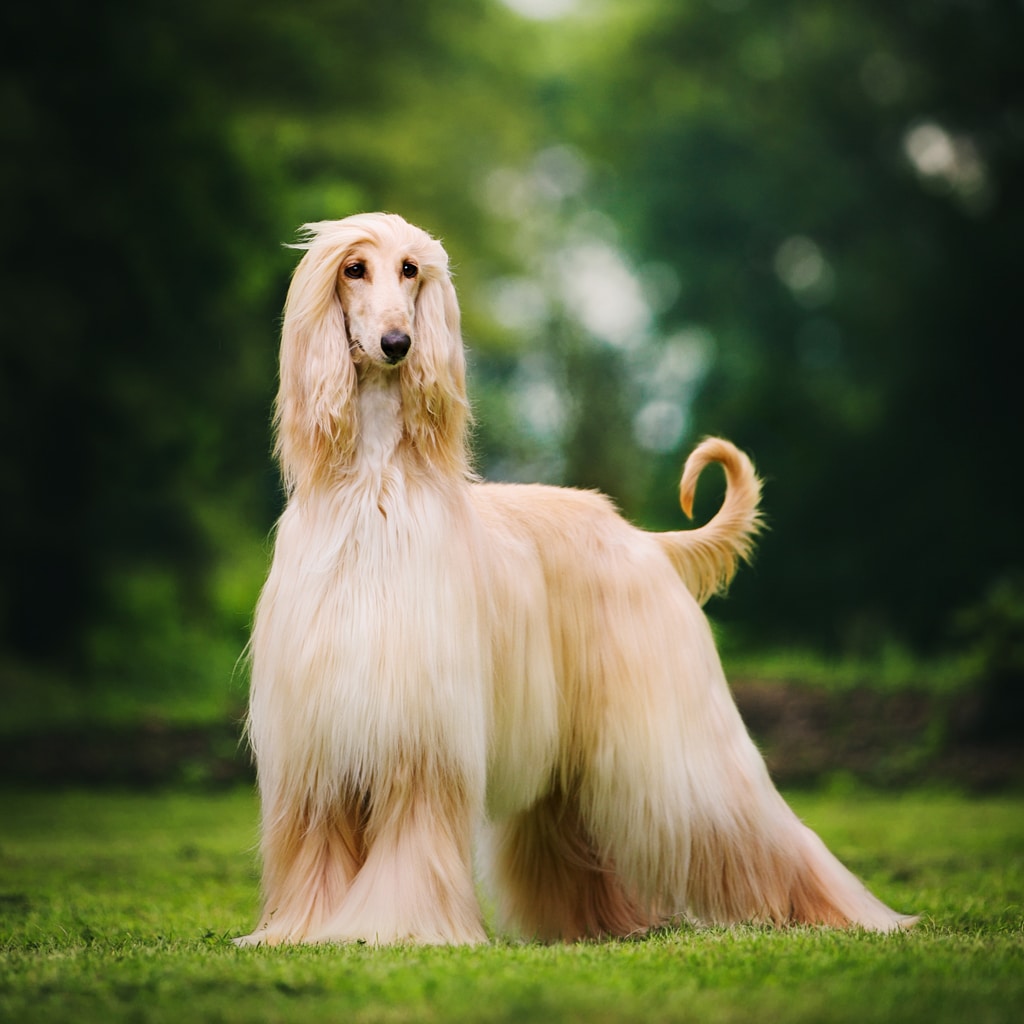
SubertT/Shutterstock
Around the Home
The Afghan Hound loves to be around other dogs and many of us find Sighthounds are happiest in pairs or packs. Cats? Well, if they’re raised with a cat from the puppy stage, they’ll most likely respect that feline. The same will not likely be the case for other cats, even small dogs, and rodents encountered outside of the home. Caution is required around this natural hunter. They may no longer be galloping across the mountains of Afghanistan, but their predatory instincts remain strong. Letting the Afghan Hound loose around small animals can lead to tragic results.
A fenced-in yard is a must for this breed. They love to run and will give chase freely. They are also jumpers. Anything shorter than a six-foot-high fence is unlikely to contain this breed.
Some chaos in the home is to be expected—especially in the puppy stage. The Afghan Hound is a regal dog, unless acting like a clown—and that happens often. They’re prone to wild bursts of energy, both inside and outside of the home.
Training and Socializing
In classic Sighthound style, the Afghan Hound is known for being not only independent but stubborn. Are they impossible to train? Absolutely not. But it can be a challenge.
Some dogs will happily do whatever you ask of them—chase a ball, sit, play fetch—just because they know you want them to. Not Afghans.
Raising a well-mannered and obedient Afghan requires a great deal of time, patience, and a commitment to positive-reinforcement techniques. They need to want to do whatever it is you’re going to ask of him, so you’ll need to understand this, accept it, and be creative and patient.
Starting early at the puppy stage is critical, with lots of training and plenty of socialization with other people, pets, and experiences.
Exercise needs are significant. The Afghan cannot thrive without considerable exercise and play time. A tired Sighthound is a good Sighthound. Without physical and mental exercise needs met, the Afghan Hound can be destructive and unruly.
Activities for Afghans
The Afghan’s ideal home environment has a large, fenced-in space where they can run for a few hours a day. Once mature and trained to be on-leash, they can be an ideal companion for those who love to jog or hike.
Lure coursing is a fun activity for dogs and their people. This is a great way to let hounds burn off steam and remember what they were born to do: run and catch things. Watching packs of Afghans in this simulated hunting sport is a wonder to behold.
While patience will be required, the Afghan Hound can do very well in activities like Obedience and Agility. They’ve certainly got the skills for both if you’ve got the patience to find ways to motivate them to participate.
Finally, with those drop-dead-gorgeous looks, regal carriage, and generally calm demeanor, the Afghan is a natural for canine therapy work.
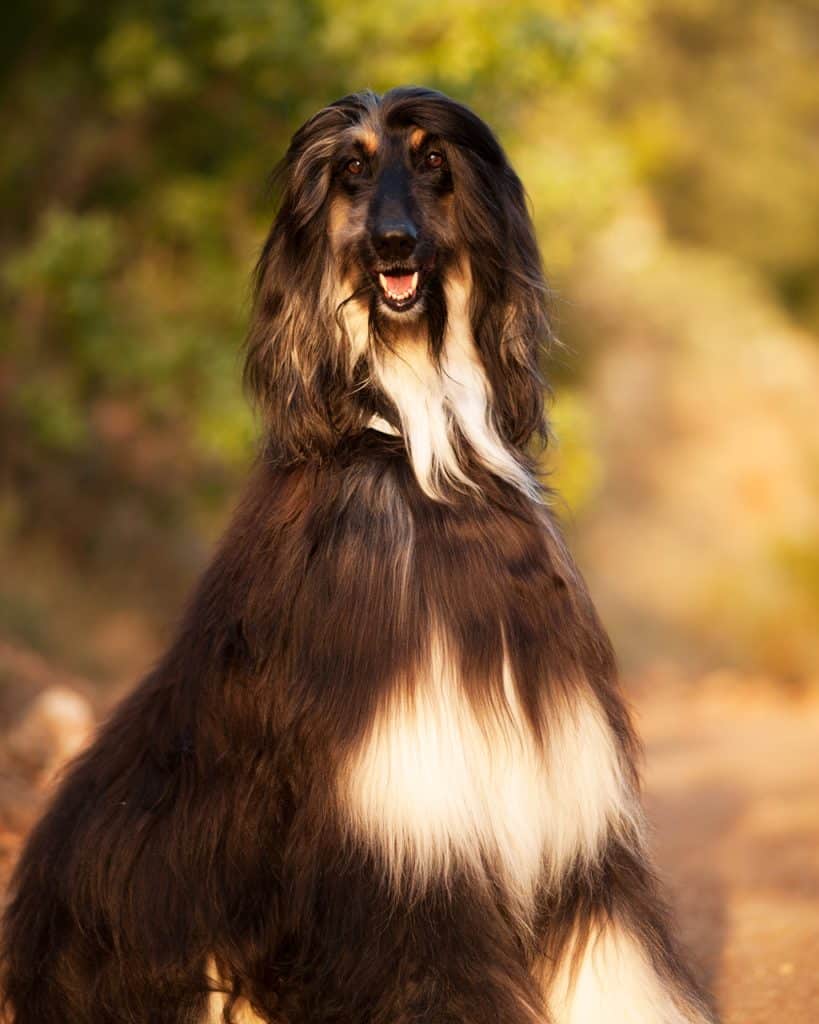
Domfotoskazok/Bigstock
Special Care Considerations
This dog’s grooming needs are significant. If you don’t have the time or interest to dedicate a considerable amount of time grooming a dog, the Afghan isn’t for you.
That long, silky coat requires daily brushing and attention. It’s prone to matting, and those mats can be difficult to remove and very uncomfortable for your dog.
Weekly bathing is also required, which includes a full wash, brushing, and a blow-out that will likely take two to three hours.
Their ears can be prone to infection, so regularly checking and gently cleaning is important. Lastly, finding a sighthound-savvy veterinarian is advised, because Afghans, due to their low stores of body fat, can have some special needs and may require unique care if under anesthesia.
As with all purebreds, the Afghan Hound can be prone to some genetic conditions. Working with a reputable breeder who conducts health clearances and is committed to the breed is very important.
The Afghan is an extraordinary dog. In an age when the word is often overused, the Afghan Hound is indisputably iconic.
For most, this breed will not be a suitable animal companion, but rather a dog to admire from afar. For the few who have what it takes to share their lives with the Afghan, the rewards are many. Their love is not given freely or to just anyone. To earn the love of an Afghan Hound, you’ll need to dedicate yourself to the pursuit of giving them the life they deserve. But to be loved by the King of Dogs is to experience something that is, frankly, as extraordinary as the breed itself.
Profile: The Afghan Hound
Size: Large. This tall, lanky, deep-chested breed stands as high as 28” at the shoulders and can weigh up to 75 pounds.
Activity level: 5
This performance athlete needs a great deal of exercise. They’ll thrive with a safe environment to run free for a few hours a day.
Grooming: 5
Intense. Daily brushing is a must, and a full bath and blow-out (two to three hours) is required weekly.
Heritage: A basal breed, pre-dating modern dogs by thousands of years. Developed in Afghanistan to course game over rough, mountainous terrain.
* For more information on Afghan Hound rescue in the United States, visit afghanhoundclubofamerica.org. In Canada, visit willowahr.jimdofree.com.
If you like the Afghan Hound, you might also consider the…
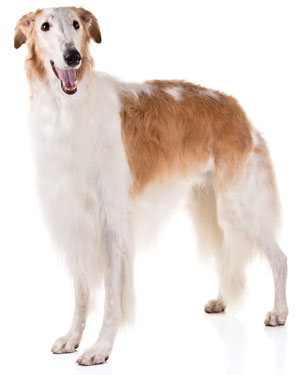
Saluki Borzoi Pharoah Hound
» Read Your Breed For more breed profiles, go to moderndogmagazine.com/breeds
This article originally appeared in the award-winning Modern Dog magazine. Subscribe today!
Join the newsletter and never miss out on dog content again!
"*" indicates required fields
By clicking the arrow, you agree to our web Terms of Use and Privacy & Cookie Policy. Easy unsubscribe links are provided in every email.

